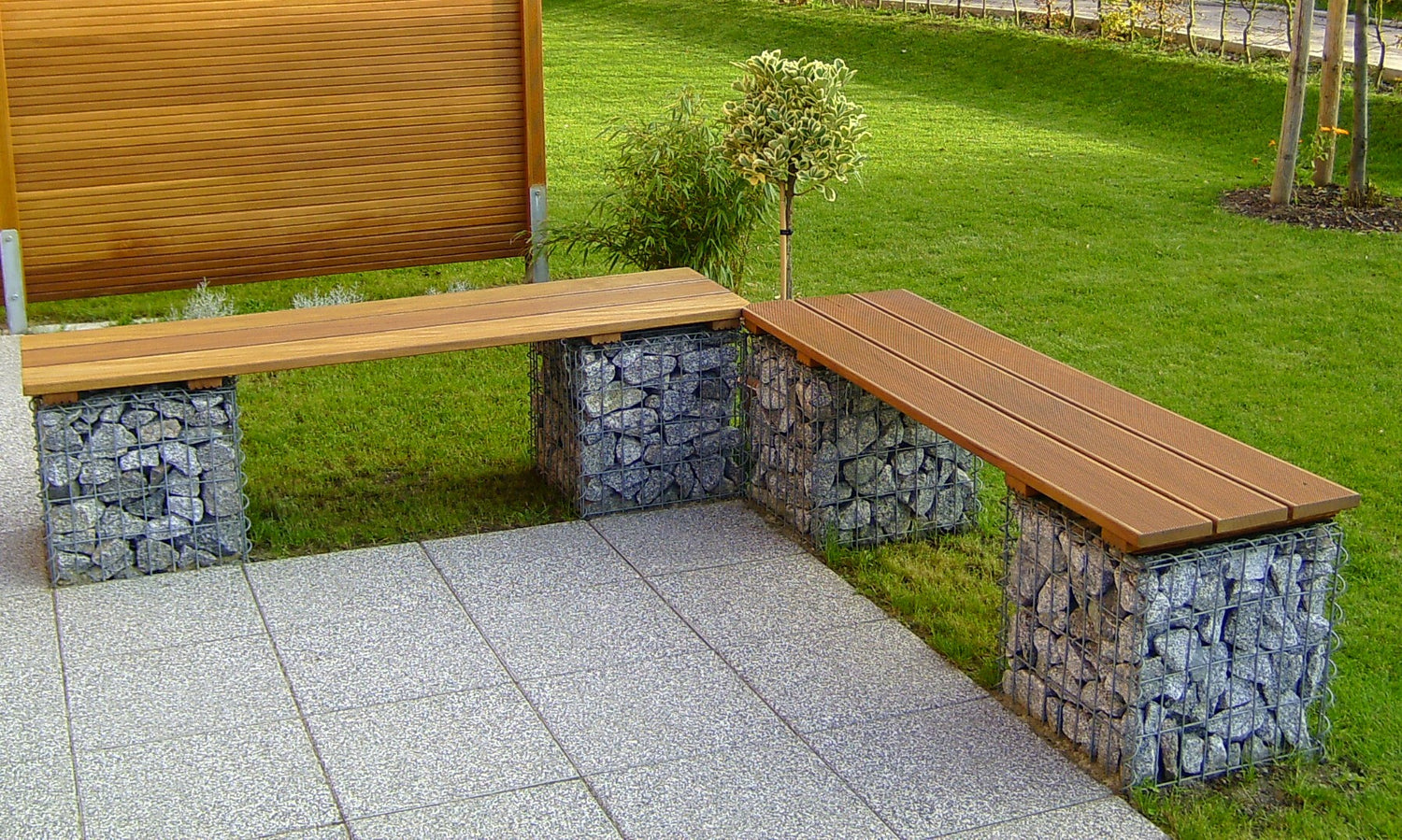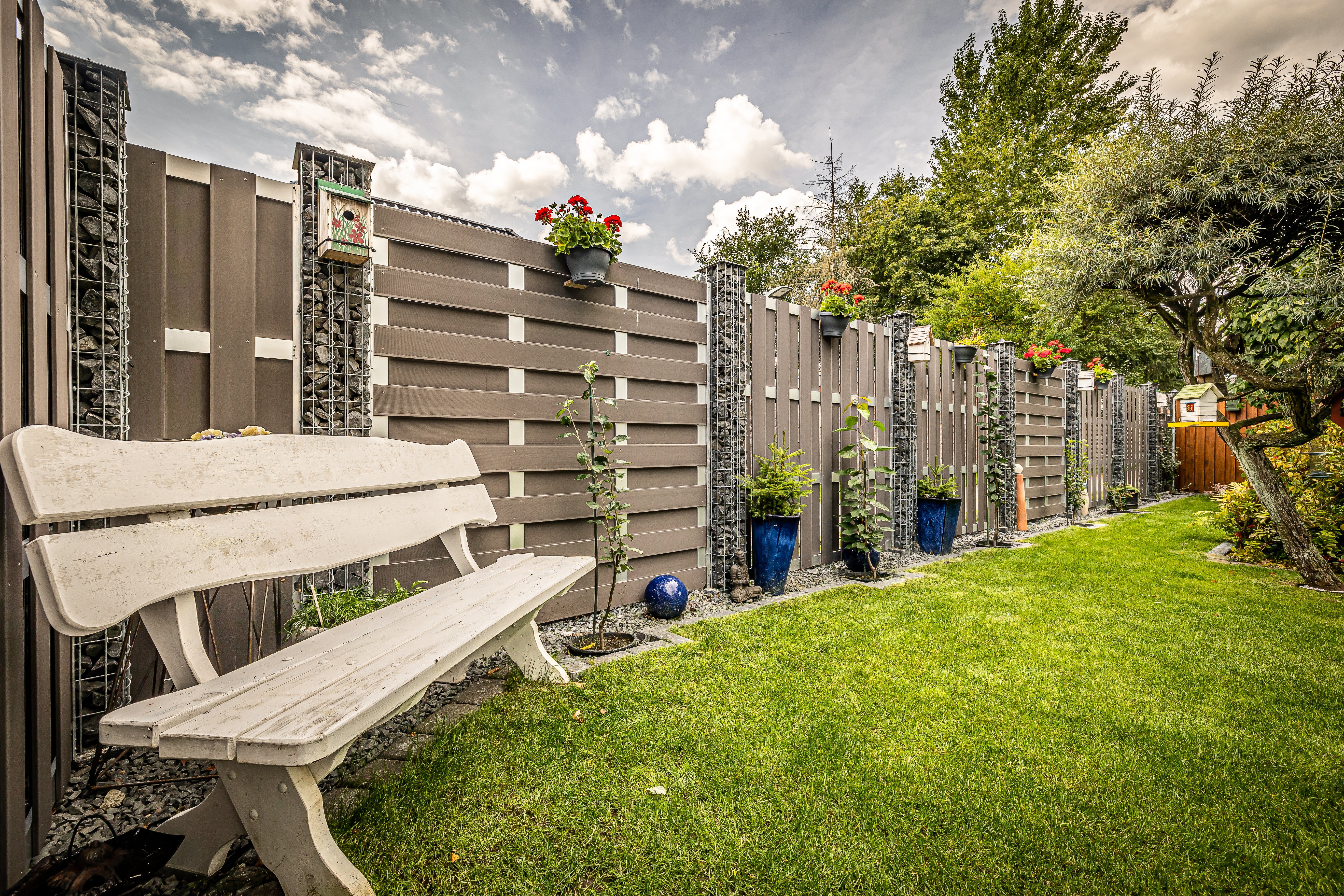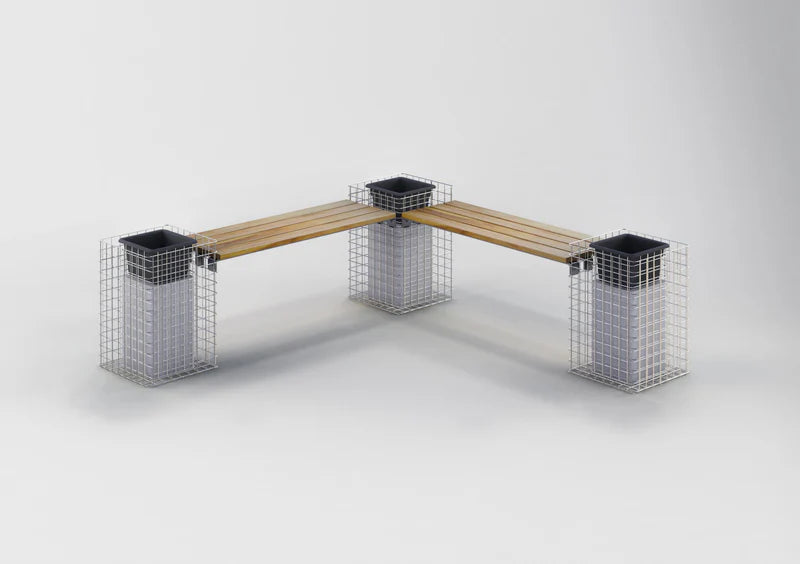Gabions have become very popular in recent years. Originally intended as structural elements for walls and fences, gabions have become a versatile design element for the garden. With a little craftsmanship, they can even be converted into a stylish bench that is not only functional but also aesthetically pleasing.
In this blog article, you will learn step by step how to build a stable, durable and visually appealing bench from a gabion. We will also explain the materials you need and give you tips for the individual finishing touches.
What is a gabion?
Before we dive into the details, it is worth taking a quick look at what a gabion actually is. A gabion is a wire basket that is usually filled with stones. The stability and robust appearance of the gabion make it a popular element in garden architecture.

Gabions are modular, meaning they come in a range of sizes and are easy to expand. They can be used as retaining walls, fences, raised beds or, as in our case, as the base for a garden bench.
materials and tools
To build your gabion bench you will need the following materials and tools:
- Gabion : Choose a gabion in the desired size. The height and length of the gabion determine the size of the finished bench.

- Wooden top : A sturdy wooden top serves as a seat. You can use hardwood such as oak or teak as it is weather-resistant. The top should be about 3-5 cm thick to ensure sufficient stability.

- Clips : The clips are crucial to securely fix the wooden pad to the gabion. They are attached to the underside of the wooden pad and then simply hooked under the wire mesh of the gabion. As described in the document, the clips can be easily removed if necessary to store the pad in winter or to remove it for maintenance.

- Screws : The screws are not included with the clips as they need to be adapted to the material of the wooden support, so please use rust-proof stainless steel screws to ensure long durability.

- Stones : Fill the gabion with stones of your choice. Depending on the design, you can choose between different types and colors of stones to customize the look of your bench.

- Drill and screwdriver : You will need these tools to attach the clips to the wooden support.
step-by-step instructions
Step 1: Preparation of the gabion
Place the gabion in the desired location in your garden. Remember that once filled, the gabion will be very heavy and difficult to move later. Therefore, place it on a firm, level surface.
Step 2: Filling the gabion
Fill the gabion with the selected stones. Make sure that the stones are evenly distributed to create a stable base for the bench. It can be helpful to fill the gabion little by little and to compact the stones every now and then to avoid voids.
Step 3: Preparing the wood support
Saw the wood to the desired length and width. Sand the edges to avoid splinters. If you want to use the bench outdoors, you should treat the wood with a weather-resistant varnish or oil to protect it from the elements.
Step 4: Attaching the clips
Attach the clips to the underside of the wooden support. As described in the document, the clips hook under the wire mesh of the gabion. This ensures that the wooden support sits securely on the gabion and does not slip. Since the clips can be removed again if necessary, the construction remains flexible.
Step 5: Installation of the wooden support
Once the clips are attached to the wooden support, place the support on the gabion and hook the clips under the wire mesh. Check that the wooden support is firmly in place and cannot be moved. If everything is stable, you have successfully built your gabion bench!
Advantages of a Gabion Bench
- Stability and durability : A gabion bench is extremely stable and weatherproof. The use of stainless steel and weather-resistant wood means it can stand outdoors for many years without losing stability or beauty.
- Individuality : You can design the bench exactly as you want. Whether with light or dark stones, with a simple or decorated wooden top - there are no limits to your creativity.
- Easy maintenance : The clips allow the wooden top to be easily removed so that you can store it safely in winter or remove it for maintenance work such as painting or oiling.
- Environmental friendliness : Gabions are made of natural materials such as metal and stone, which are durable and environmentally friendly. They contribute to a sustainable garden by making the best use of natural resources.
- Multifunctionality : In addition to their function as a place to sit, gabion benches can also be used as a design element in the garden. They can be wonderfully combined with plants or other garden furniture and fit seamlessly into different garden styles.
Gabion bench as a project for do-it-yourselfers
Building a gabion bench is an ideal project for DIY enthusiasts looking for a practical and creative challenge. It doesn't require any special skills, just a little patience and care. The biggest advantage is that you can design the final product according to your own ideas and end up with a unique piece in your garden.
Conclusion
A gabion bench is not only a practical place to sit, but also a decorative element that gives your garden that special something. With the right planning and the right materials, you can easily build your own bench yourself. The possibility of customizing the bench and adapting it to your needs makes this project particularly attractive.
Whether you prefer a modern, minimalist look or want to add rustic accents - a gabion bench offers countless design options. Try it out and transform a simple gabion into a unique piece of furniture for your garden!




Leave a comment
This site is protected by hCaptcha and the hCaptcha Privacy Policy and Terms of Service apply.